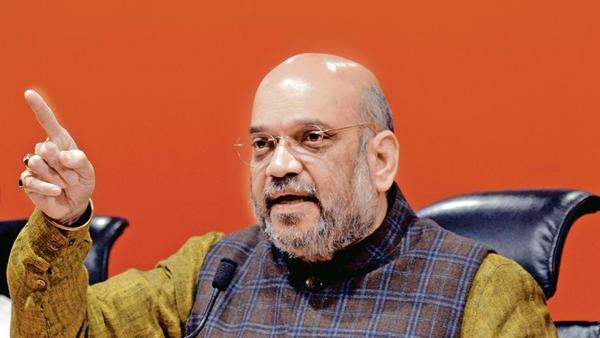Union Home Minister Amit Shah has spoken about the massive strides made by India in the direction of better disaster management. He highlighted how policy initiatives in the form of early warning capabilities and advanced preparations have been able to reduce the loss of lives due to disasters to less than 1 per cent of the number of lives which were lost due to disasters just over a decade ago.
Shah cited the examples of cyclones Phailin in 2013, Hudhud in 2014 and Fani earlier this year, which were tackled effectively by India. He stressed upon India’s phenomenal success in the field of disaster management during his inaugural address at the Shanghai Cooperation Organisation (SCO) joint exercise on ‘urban earthquake search and rescue’. The joint exercise is being organised by the National Disaster Response Force (NDRF), India’s specialised force for handling disasters. The Union Home Minister noted that the loss of lives was reduced to 64 persons during the cyclone Fani, which struck the state of Odisha, earlier this year was from 10,000 lives that were lost in the cylcone that struck the state in the year 1999.
The effective manner in which the cyclone Fani was handled, indeed, truly captures the huge strides that India has made when it comes to disaster preparedness and management. As per the India Meteorological Department, ‘Fani’ had crossed the Odisha coast close to Puri with a maximum sustained wind speed of 175-185 kmph, gusting to 205 kmph, from 8-10 am on Friday. However, with the help of IMD’s better warning system and better centre-state coordination, the affected areas witnessed mass evacuation of over 11.5 lakh people along with the highest ever deployment by NDRF. This was in sharp contrast to the Odisha cyclone that occurred in 1999 and had killed close to 10,000 people, flattened thousands of dwellings and devastated huge areas of the countryside.
Only till very recently India did not enjoy such inspiring success in tackling disasters. Take the 2013 flash floods in Uttarakhand, for example when even the CAG had slammed the state government for lack of “adequate” response. The constitutional body had said the “immediate response of the government and district administration of the affected districts was not adequate”.
Shah further spoke about India’s focus on disaster-resilient infrastructure with the object of minimising deaths. He also said India is leading a coalition for disaster-resilient infrastructure that will be multi-health oriented and will also help in reducing losses to property and infrastructure.
Ever since the Modi government came at the helm of affairs, it has made effective disaster management one of its topmost priorities. Recently, while speaking at the inauguration of a two-day annual conference organised by the NDRF on capacity building of state disaster response forces (SDRFs) in consultation with home guards, civil defence and fire services, Union Home Minister Amit Shah had pronounced the object of making India a top-notch nation for tackling disasters. He had pronounced the mandate to “Make India Number One In Disaster Management.”
The Modi government has persisted with its agenda to continuously make rapid strides in its efforts to achieve better disaster management and preparedness. During his inaugural address at the SCO joint exercise, Union Home Minister, Shah has said that India will soon come up with a National disaster management scheme that will not only cover the disaster risk renewal Sendai Framework but also the goals of permanent development and climate related agreement. The Sendai framework that the Union Home Minister is referring to is a 15-year, voluntary, non-binding agreement which not only recognises the fact that the State has a primary role in reducing disaster risk.
He also said that India has already completed the amendment process in the National Disaster Management Scheme which was launched in 2016. He also disclosed that all the 28 states, 9 Union Territories and 90 per cent districts have completed their disaster management schemes. He said, “We will now come up with such a national scheme which not only would cover disaster risk renewal Sendai framework but also the goals of permanent development and climate related agreement.”
